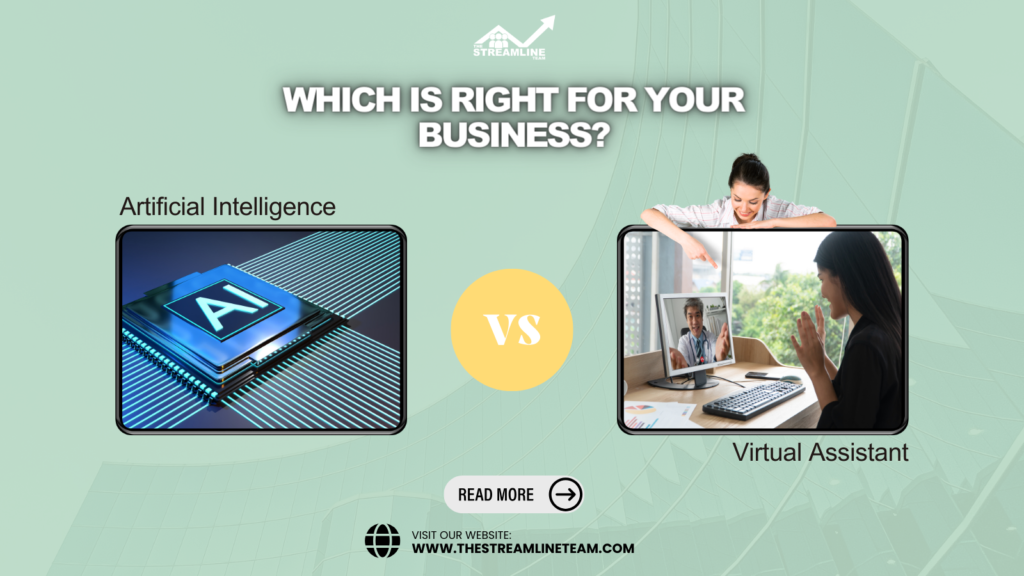In today’s fast-paced digital age, businesses are constantly seeking ways to boost productivity, reduce costs, and provide top-notch customer service. Two prominent solutions on the rise are Artificial Intelligence (AI) and Virtual Assistants (VAs). Both promise to streamline operations and improve efficiency, but which is the right fit for your business? In this blog, we’ll explore the strengths and weaknesses of each to help you make an informed decision.

Understanding Artificial Intelligence (AI)
AI is the simulation of human intelligence processes by machines, particularly computer systems. AI systems can analyze data, recognize patterns, and make decisions with minimal human intervention. Here’s why AI might be a good fit for your business:
1. Automation: AI can automate repetitive tasks, such as data entry, customer inquiries, and data analysis, saving your employees valuable time.
2. 24/7 Availability: AI-powered chatbots and virtual assistants can provide round-the-clock customer support, enhancing your service’s accessibility.
3. Data Processing: AI excels at processing large volumes of data quickly and accurately, making it ideal for data-driven industries like finance and healthcare.
4. Predictive Analytics: AI algorithms can predict trends, helping you make informed decisions and stay ahead of the competition.
5. Cost Savings: Implementing AI can reduce labor costs associated with routine tasks.
6. Scalability: AI can scale effortlessly as your business grows, accommodating increased workloads without hiring more staff.
Considering Virtual Assistants (VAs)
Virtual Assistants are real people who work remotely to provide various administrative, creative, or technical services. Here’s why VAs might be the right choice for your business:
1. Personal Touch: VAs offer a human touch, making them ideal for tasks that require empathy, creativity, or a personalized approach.
2. Flexibility: You can delegate tasks to VAs on an as-needed basis, allowing you to scale services up or down quickly.
3. Diverse Skill Sets: VAs come from various backgrounds, offering a wide range of skills and expertise, making them suitable for diverse tasks.
4. Collaboration: VAs can work closely with you and your team, becoming an integral part of your business operations.
5. Cost-Efficiency: While VAs have associated costs, they are often more cost-effective than hiring full-time employees.
6. Reduced Training Time: VAs are experienced professionals who require minimal training, saving you time and resources.
Finding the Right Balance
Ultimately, the choice between AI and VAs depends on your business’s specific needs and goals. Many businesses find that a combination of both AI and VAs offers the best of both worlds. For instance, you can use AI to handle routine tasks and VAs to manage more complex, personal, or creative responsibilities.
To determine the right balance for your business, consider conducting a thorough analysis of your workflow, identifying pain points, and assessing where each solution can make the most significant impact.
In conclusion, whether you opt for the automation and efficiency of AI or the personal touch of Virtual Assistants, both can play vital roles in improving your business operations. Carefully evaluate your requirements and resources to strike the right balance and pave the way for a more productive and prosperous future for your business.

